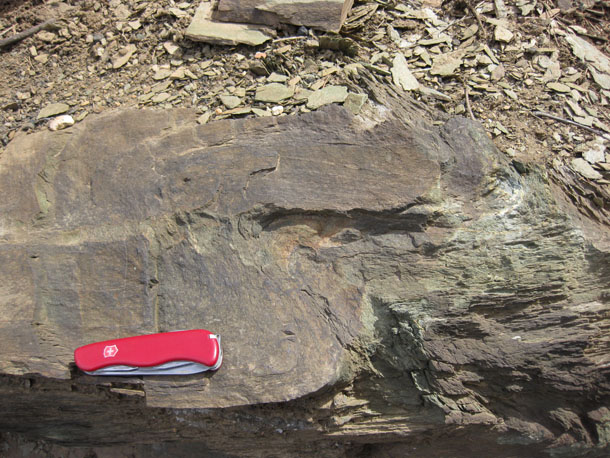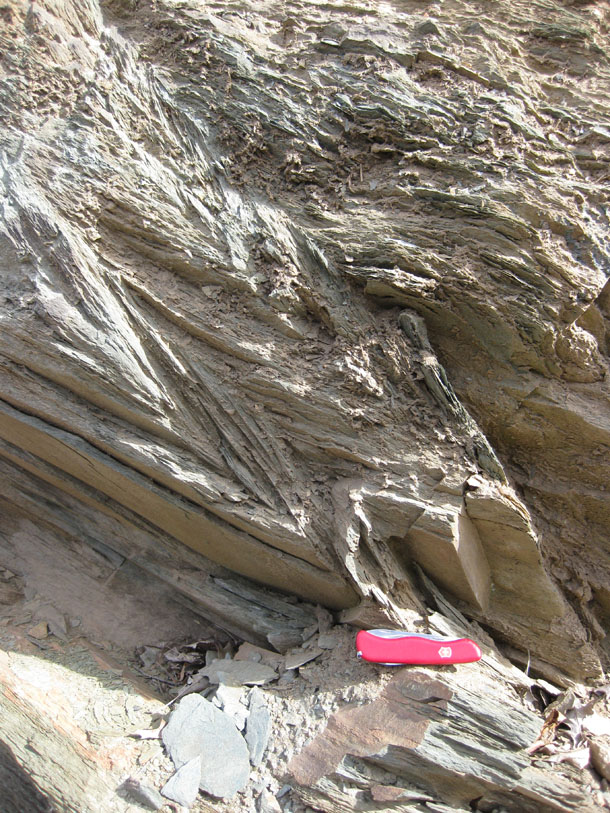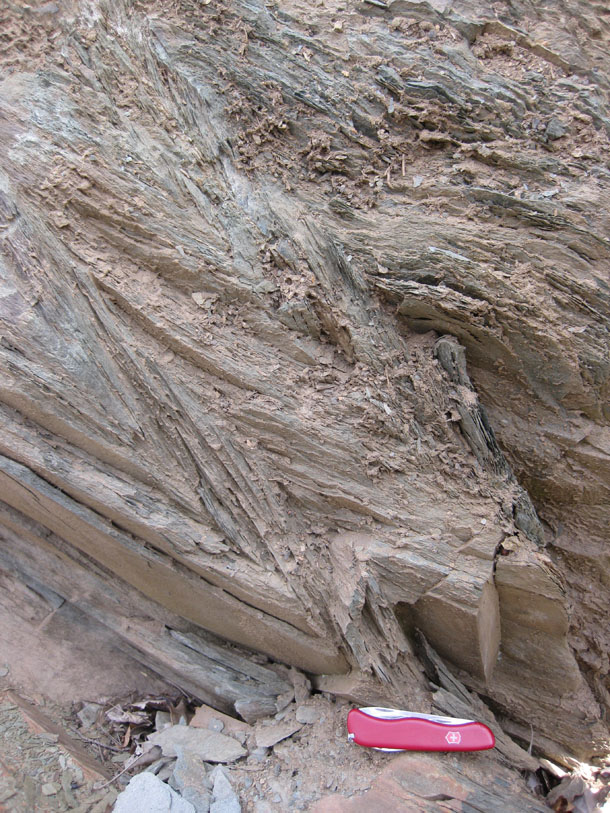Last Sunday morning, two of my former GMU students, Aaron and Alan, led a hike for the GMU Geo-Club to Thoroughfare Gap, a water gap in the Bull Run Mountains of Virginia’s eastern Blue Ridge province. I’ve mentioned the Weverton Formation structures we saw there, and a nice example of a hackle fringe in previous posts.
We hiked west down the railroad tracks, and crossed the contact from the Weverton into the underlying Catoctin Formation greenstone (meta-basalt), which was dominantly non-photogenic. However, one thing that caught my eye was this chevron fold in a foliated section of the Catoctin.

Here, the Catoctin Formation is a chlorite phyllite (in places schisty). These rocks began as giant oozing basaltic lava flows, extruded onto the mid-Atlantic margin of North America long before the Atlantic itself. In fact, these lava flows are thought to have accompanied the breakup of an early supercontinent called Rodinia, and the opening of the Iapetus Ocean basin. Later, when the Iapetus closed, Africa rammed into North America and metamorphosed the basalt into greenstone. It was at this time that the Appalachian mountains were “made” and Pangea was sutured together. It was also, of course, at this time that they were likely to have been folded.
Check out a side view of the folds, with and without highlighting sunlight:


The style of folding here is very distinctive: straight limbs of constant thickness and crisp “hinge” areas. They are called chevron folds for this reason, and as Alan pointed out, you could put three of them on your shirtsleeve to pass for a sergeant of structural geology.
Most of the Catoctin that we observed here did not exhibit any obvious folding. We only noticed the greenschist foliation being bent up in this one place.
Happy Friday — hope you can get out for a hike of discovery this weekend too.


0 thoughts on “Friday fold: Kinktactin”